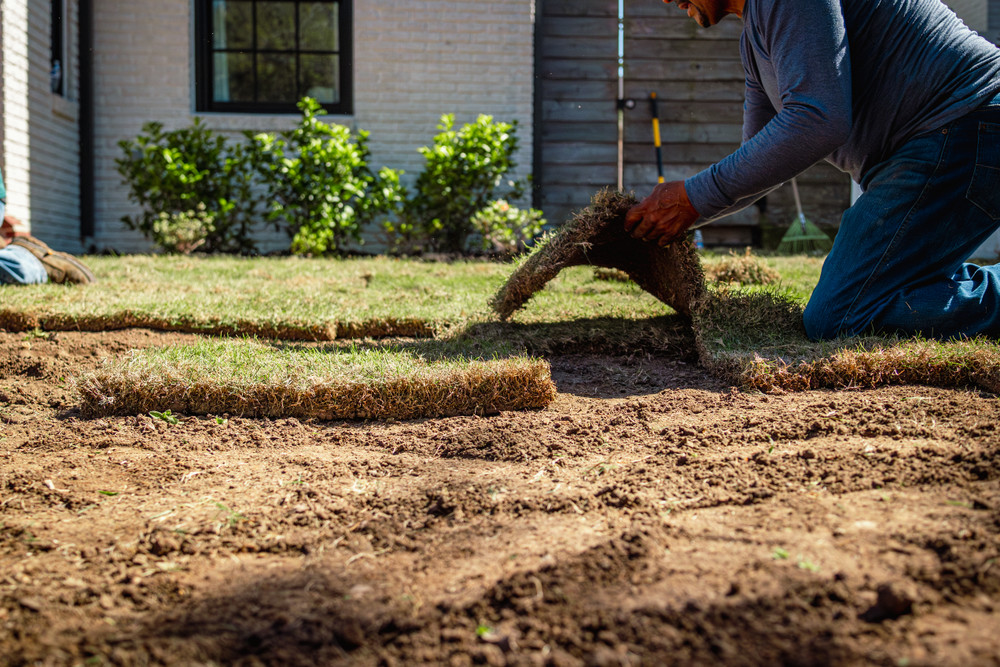How Late in the Year Can You Lay Sod? Understanding Ideal Weather Conditions for Sod Installation
Posted by Farm2Yard on Oct 13th 2025
How Late in the Year Can You Lay Sod? Understanding Ideal Weather Conditions for Sod Installation
When the seasons start to cool down, many homeowners wonder if it’s too late to lay sod. The good news: as long as air and soil temperatures are in the right range and the ground isn’t frozen, you can install sod successfully well into the fall — and even in mild winter climates. The key is understanding how temperature and soil conditions affect root growth.
The Science Behind Ideal Sod Conditions
Sod is a living plant that depends on temperature, moisture, and soil contact to take root. While sod can technically be installed anytime the ground isn’t frozen, the best results happen when the air is mild and the soil is warm enough for root activity.
-
Air temperature: between 50°F and 80°F
-
Soil condition: moist, firm, and not frozen
-
Soil temperature: the most important factor — it controls how quickly roots establish
Soil temperature changes slowly, lagging behind air temperature. Even when the air cools in late fall, the ground often stays warm enough for roots to grow.
Cool-Season Grasses: Fall Is Your Friend
If you’re in a cool or transition zone — places where tall fescue, Kentucky bluegrass, or perennial ryegrass thrive — fall is the prime time to lay sod.
-
Ideal soil temperature: 50°F–65°F
-
Best installation window: early fall through mid-November, depending on local frost dates
During this period, air temperatures are cool enough to reduce heat stress, but the soil still holds summer warmth. Roots establish quickly before winter dormancy, giving you a lush, resilient lawn by spring.
You can also lay cool-season sod in early spring, but fall has the edge thanks to fewer weeds and steadier soil moisture.
Warm-Season Grasses: Wait for the Heat
In the Southern U.S., warm-season sod like Bermudagrass, Zoysia, St. Augustine, and Centipede requires higher temperatures to establish.
-
Ideal soil temperature: 65°F–75°F
-
Best installation window: late spring through early fall
You can continue laying warm-season sod until air temperatures consistently dip below the 60s. As long as the soil stays above 60°F, the grass will keep rooting — even if the top growth slows.
In many Southern regions, this means sod installation can continue well into late fall, sometimes year-round. Just be sure to water deeply and frequently during hot weather to avoid drying out the new turf.
Why Soil Temperature Matters More Than Air Temperature
Root development happens underground, and soil holds heat longer than air. In fall, it’s common for soil to remain 10–15 degrees warmer than the air. This means that even when daytime highs dip into the 50s, your soil could still be in the sweet spot for rooting.
You can check soil temperature using a simple thermometer at 2–4 inches deep, or consult your state’s agricultural extension service for real-time soil temperature maps.
Bottom Line: It’s Not Too Late
Don’t let cooler air trick you into thinking it’s too late to lay sod. As long as your soil is above 50°F and not frozen, your new lawn can still take root and thrive. Focus on soil preparation, steady watering, and temperature — not the calendar — to ensure success.
Whether you’re in a cool-season zone or a warm-season region, the key takeaway is this: if the ground is workable and the soil is warm, it’s a great time to sod.

